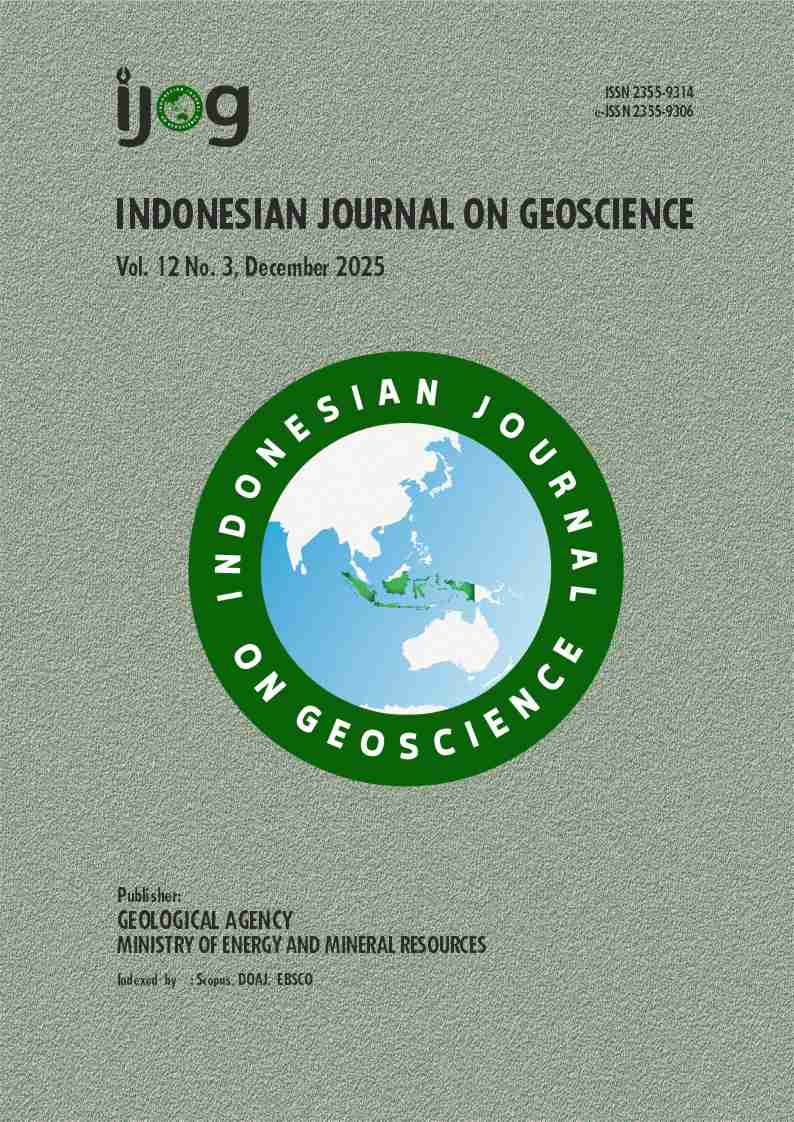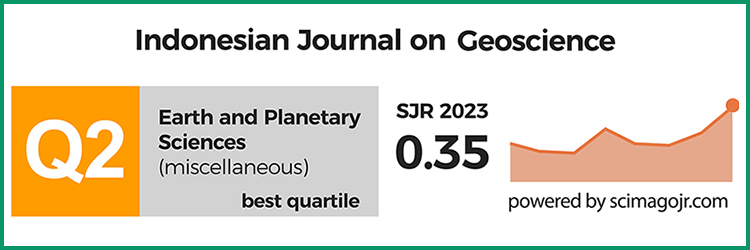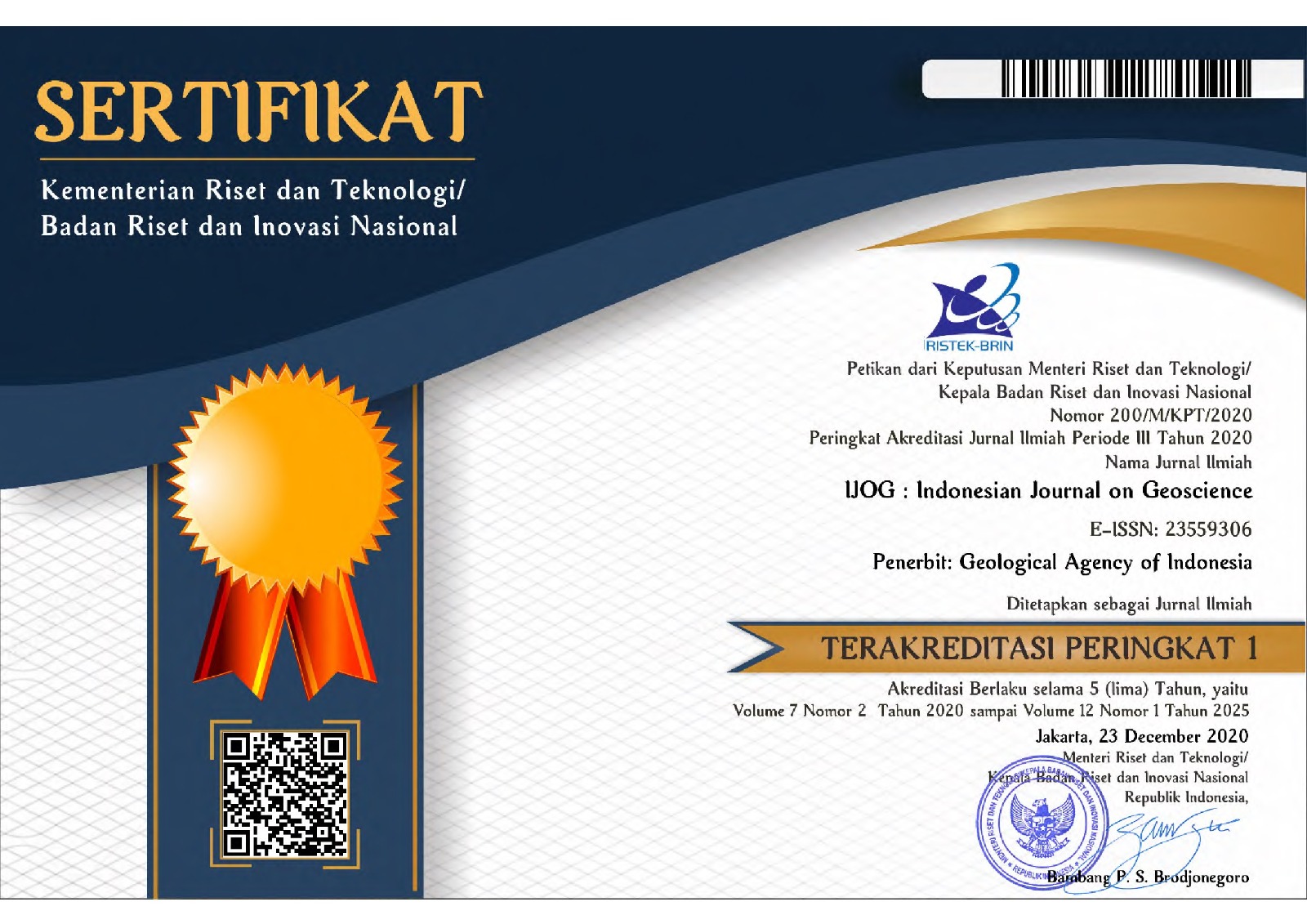Hydrogeochemistry and Groundwater Quality Assessment of Shallow Groundwater in the Penguluran Basin, East Java, Indonesia
DOI:
https://doi.org/10.17014/ijog.12.3.343-365Abstract
Research of the hydrogeochemistry and groundwater quality of shallow groundwater in The Penguluran Basin, East Java, Indonesia, is still very limited. This study aims to identify hydrogeochemistry and groundwater quality in the shallow groundwater of The Penguluran Basin. Twelve water samples were taken from the residents' wells in July during the dry season. Groundwater samples were analyzed in the laboratory to determine the concentration of major ions. The major ions include Mg2+, Na+, K+, Ca+ and anion CO32-; HCO3-; SO42-; Cl-. Laboratory results were analyzed using Piper Trilinear Diagram and Gibbs Diagram, Weathering type, Sodium Adsorption Ratio (SAR), Soluble Sodium Percentage (SSP), Residual Sodium Carbonate (RSC), Permeable Index (PI), Magnesium Hazard (MH), Chloro-Alkaline Indices (CAI), Corrosivity Ratio (CR), and Anthropogenic Impact (AI) using NO3-. The results showed that hydrogeochemical facies in the studied area were of Ca+- Mg2+- HCO3- type. Groundwater cations were dominated by Ca+, while anions were dominated by HCO3-. The concentration of cations were Ca+ > Mg2+ > Na+ > K+, while the anions were HCO3- > Cl- > SO42- > CO32-. Groundwater in Penguluran Basin was freshwater with silicate weathering type. Analysis of major groundwater ions for agricultural irrigation purposes showed that most groundwater samples were safe for agricultural irrigation. The CAI-I and CAI-II had mostly negative values. Samples showing negative CAI values also showed silica weathering. CR values were mostly <1 indicated that naturally groundwater was safe from corrosive vulnerability for industry purposes. Nitrate levels in the groundwater showed that 58 % exceeded the allowable limit due to the high risk of anthropogenic impacts to groundwater. The research is expected to provide new information about groundwater in The Penguluran Basin.



















